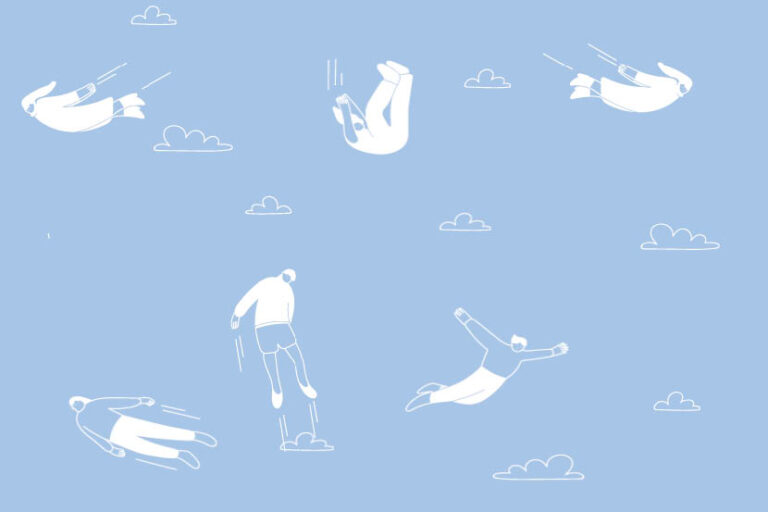
Changing everyday habits that can determine the state of our lives, for better or worse, is no easy task
When it comes to making things happen, we often want to see quick results, but the truth is you need consistency, sustained motivation and persistence. Remember Aesop’s fable The Tortoise and the Hare. Slow and steady wins the race. Take the following small steps now to reap rewards sooner rather than later.
1. PRACTISE MINDFULNESS
Our habits reveal a lot about us. The practice of mindfulness gives us the ability to pause and consciously recognise and reflect on our habitual impulses, actions and reactions. We become aware of how our involuntary habits have a powerful effect on our lives and can assess whether they are positive or negative and whether we want to keep or lose them.
Be mindful as you go about your day. Become aware of any actions you are making, no matter how small they may be, and make a mental note of them. At the end of the day, write down both the positive and negative actions you carried out. If you find it hard to notice your bad habits, be brave and ask someone close to you to be brutally honest. Now pick one of the negative actions from your list — the one you would most like to change. This is the first bad habit you are going to work on replacing with a healthier alternative.
2. DEVELOP A STRATEGY
Write in a journal the bad habit you have chosen including the trigger, action and reward. Now note down the action and reward of the good habit you would like to replace it with, assuming you are keeping the same trigger. However, if the trigger for the new habit is different, try to remove anything that would stimulate the trigger associated with the bad habit you are trying to break.
When choosing the new habit, make sure it’s really rewarding — it needs to evoke an emotion in you. For example, I made a habit of eating healthy dinners. However, there was no chance I was going to forgo nibbling on something sweet for dessert so, as my reward, I let myself indulge in a piece of dark chocolate after every meal. This stimulated the release of feel-good chemicals in my brain, helping me to wire the habit much quicker and make it stick.
Ensure your new habit has clear progress check points. You need to know that by building the habit you are going to reach a tangible outcome and will be able to chart your progression towards it. Without this, you will lose motivation. For example, after my healthy dinner, I check in and ask myself how I feel on a scale of one to 10. As the answer tends to be ‘good’, having eaten a nourishing meal, my brain registers this and so urges me to repeat the act daily.
3. VALUE VERSUS COST
To break a bad habit and form a new one, you need to have a strong enough reason to make it happen. Ask yourself how the new habit will improve the quality of your life and why it is so important to you.
You must also recognise the cost if you continue along your existing route and don’t practise your new habit. Ask yourself how the bad habit is affecting your life, as well as what the consequence will be down the line if you don’t kick it.
Write down the answers in your journal and let them sink in so that the reason for forming the new habit is clear in your mind. It will give you a real sense of urgency as you realise it’s something that you need to change now, not tomorrow or the day after.
4. MENTAL REHEARSAL
To help anchor the behaviour with the emotional reward, you can use mental rehearsal. This means imagining performing the action and it is incredibly effective in habit change.
First, find somewhere you won’t be disturbed. Sit up straight and close your eyes. Take a deep breath in and exhale slowly. Free your mind of distractions and focus on a mental picture of the situation you will be in when you are going to form the habit. Use all your senses and think about what you see, hear, feel, touch and smell. Imagine the trigger happening and, as a result, actively following through on the action. Having done this, imagine the rush of positive feelings that flood your senses. Now open your eyes. Take a moment to consider how you will feel in a week’s time if you stick to your habit. This will reinforce the pleasure associated with the action.
5. TAKE ACTION
Schedule a daily slot in your diary to practise mental rehearsal and carry out the new habit in real life. Combining the two will be more effective than doing one alone. It’s important you repeat the three-part habit loop until your action is wired to the old or new trigger.
It’s easy to have a momentary relapse. Should this happen, don’t beat yourself up about it or let it stop you in your tracks. Just refer back to your journal and soak in why forming the new habit is important.
6. TIME TO REFLECT
Schedule time out every week to evaluate and reflect on the progress you have made with your habit. Make sure there is a trigger to remind you. For example, you could choose Sunday morning after you’ve eaten breakfast. Think about your progress in the week, the challenges you encountered and how you overcame them. Jot down your thoughts in your journal, so you can keep track and refer back to them if necessary.
7. ACCOUNTABILITY PARTNER
Choose a friend to be your accountability partner. Tell them what you’re doing and schedule time in the diary to speak to them at least once a week for support. Place a cost if you don’t follow through on your action daily, such as cleaning your friend’s car and a reward if you do, say, a lazy night in front of the TV watching one of your favourite box sets.
Once you are sure the new habit is for keeps, treat yourself and your friend to something a little bigger like a shared spa day. This will motivate you to stick to your path to success and will give your friend the incentive to stay by your side during the process.
So, as you continue to make your way through the year, let go of old habits that have been holding you back and embrace new ones. Through changing your habits that have the power to change your life, you can truly fulfil your potential.


















